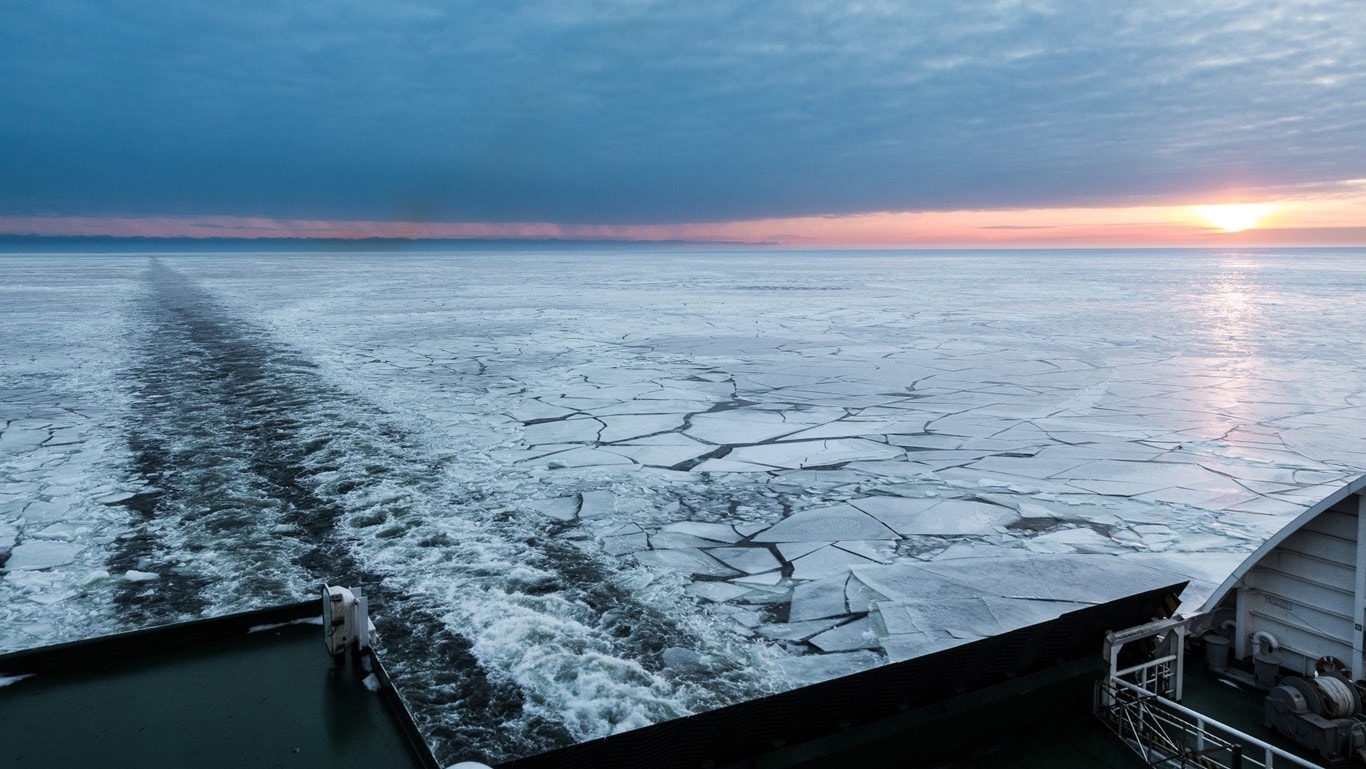Navigating the Foggy Future: Adapting Trans-Arctic Shipping Routes to Overcome Sea Fog Challenges
The swift retreat of Arctic Sea ice has revealed new opportunities for trans-Arctic shipping routes, allowing for shorter distances and reduced shipping costs. However, a new research letter suggests that these projected routes may be too optimistic, as they fail to consider the increased frequency of sea fog over areas of retreating sea ice.
The research done, titled "Adapting to a Foggy Future Along Trans-Arctic Shipping Routes," published in Geophysical Research Letters Volume 50, Issue 8, highlights the need to factor in the impact of sea fog on shipping operations and calls for the redesign of routes to ensure safer navigation.
The study reveals that delays due to sea fog can range from 1 to 4 days, accounting for approximately 23% to 27% of the total sailing time along the Northwest Passage and 4% to 11% along the Northern Sea Route compared to previous estimations. These findings challenge the conventional understanding of trans-Arctic shipping routes, which have primarily focused on sea ice conditions while disregarding the impact of sea fog.
To address this issue, the researchers propose a new route design incorporating projected sea ice extent and fog frequency. By detouring routes with a lower incidence of sea fog, the new route could reduce sailing time by 0.3 to 1 day. Importantly, this alternative route saves time and shipping costs and lowers the risk of catastrophic accidents compared to the shortest route, which may encounter denser foggy conditions. In addition, the new route design considers the safety of ship navigation and minimises the need for unscheduled port calls, thus avoiding additional costs.
Sea fog poses a significant challenge to ship operations, particularly in areas with floating ice, leading to potential collisions, ecological damages, and financial losses. Even with advanced navigation instruments, such as radar and searchlights, the reduction in ship speed due to sea fog can compromise safety. The collision between the icebreaker R.V. Xuelong and an iceberg during its 35th voyage serves as a reminder of the risks associated with foggy conditions.

Previous assessments of optimal navigation routes in the Arctic have primarily focused on sea ice conditions under different climate scenarios. However, this research highlights the urgent need to consider the impact of sea fog on trans-Arctic shipping routes. The projected increase in sea fog frequency in the 21st century calls for a comprehensive reassessment of route planning to ensure safer navigation and minimise economic costs.
The study's conclusions were obtained from a combination of historical observations, reanalysis data, and model simulations. By analysing sea fog variability and its relationship with atmospheric conditions, the researchers provide valuable insights into the future of Arctic shipping routes. Furthermore, the results underscore the significance of adapting to a changing climate and considering the full range of environmental factors affecting shipping operations.
As the Arctic continues to experience rapid environmental changes, the shipping industry must adapt and embrace innovative approaches to ensure safe and efficient trans-Arctic navigation. For example, redesigning shipping routes to account for the increased frequency of sea fog can significantly reduce delays, minimise the risk of accidents, and optimise shipping costs.
The research letter serves as a timely reminder for stakeholders in the shipping industry to prioritise safety and sustainability in the face of a foggy future along trans-Arctic shipping routes.

